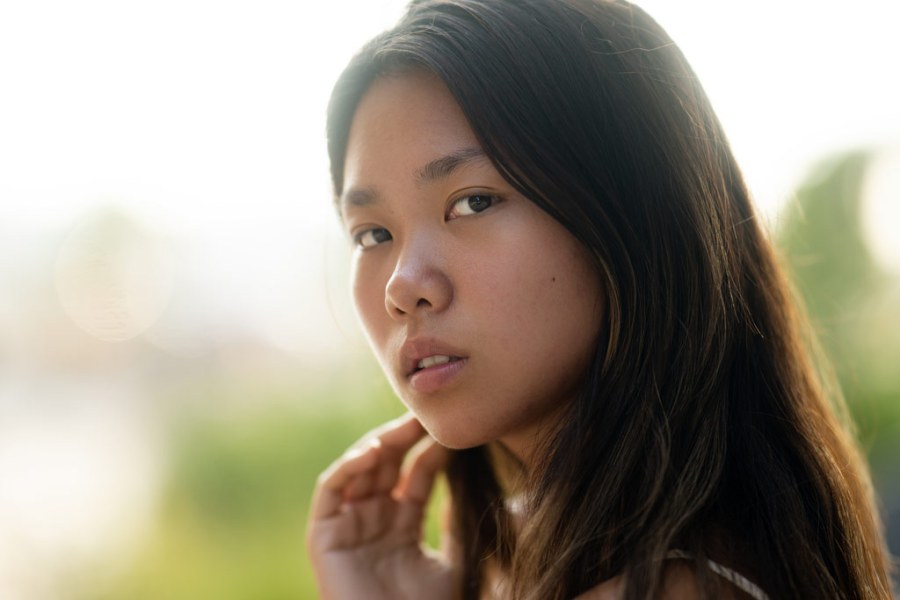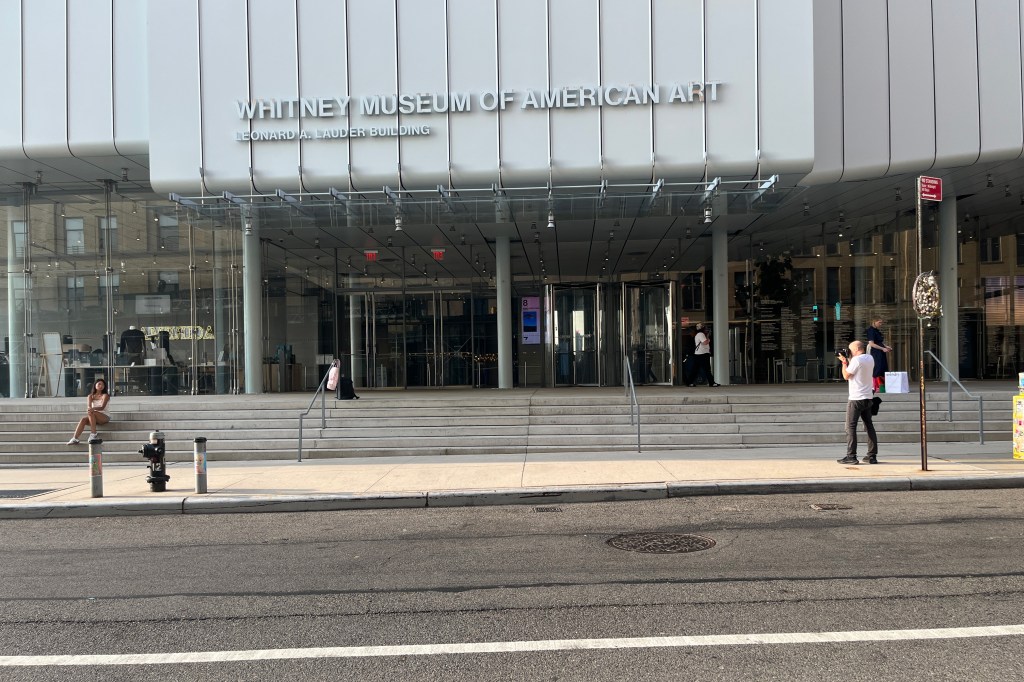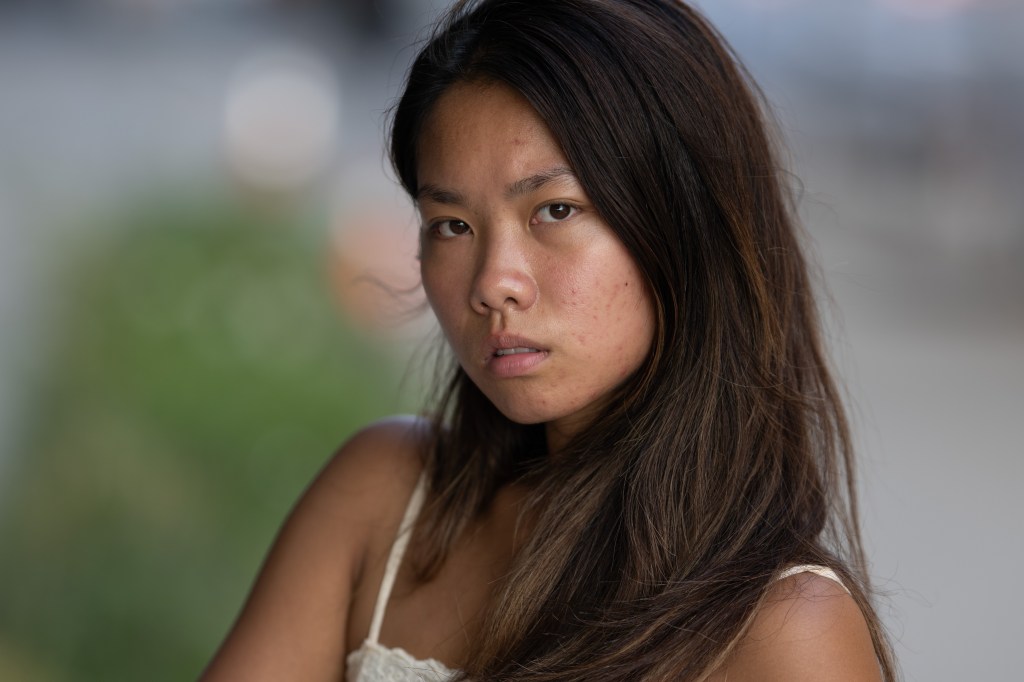I pit two iconic Nikon lenses against each other in this bokeh showdown. The streets of New York’s Meatpacking District serve as a backdrop to the battle to see which one is better suited to create the creamy bokeh so desired for portraits. Read on to find out who will come out on top: the large-aperture Nikon Z 85mm f/1.2 S or the Nikon Z 135mm f/1.8 S Plena with its renowned bokeh.
The shallow depth of field look, where the subject is sharp and the background blurred, has long been appreciated by professional photographers. This look comes at a price. A medium-format camera is great for separating the subject from the background, but it is large and expensive, making it impractical for most users. A full-frame camera with a fast lens is a more reasonable option for most photographers.
Traditionally, a fast lens was one that opened to f/1.4; however, today, an even larger aperture of f/1.2 is common for Canon, Nikon, and Sony lenses. These fast lenses are about 4x the price of slower f/2 lenses but produce images with a unique rendering that cannot be replicated by their lesser priced counterparts.
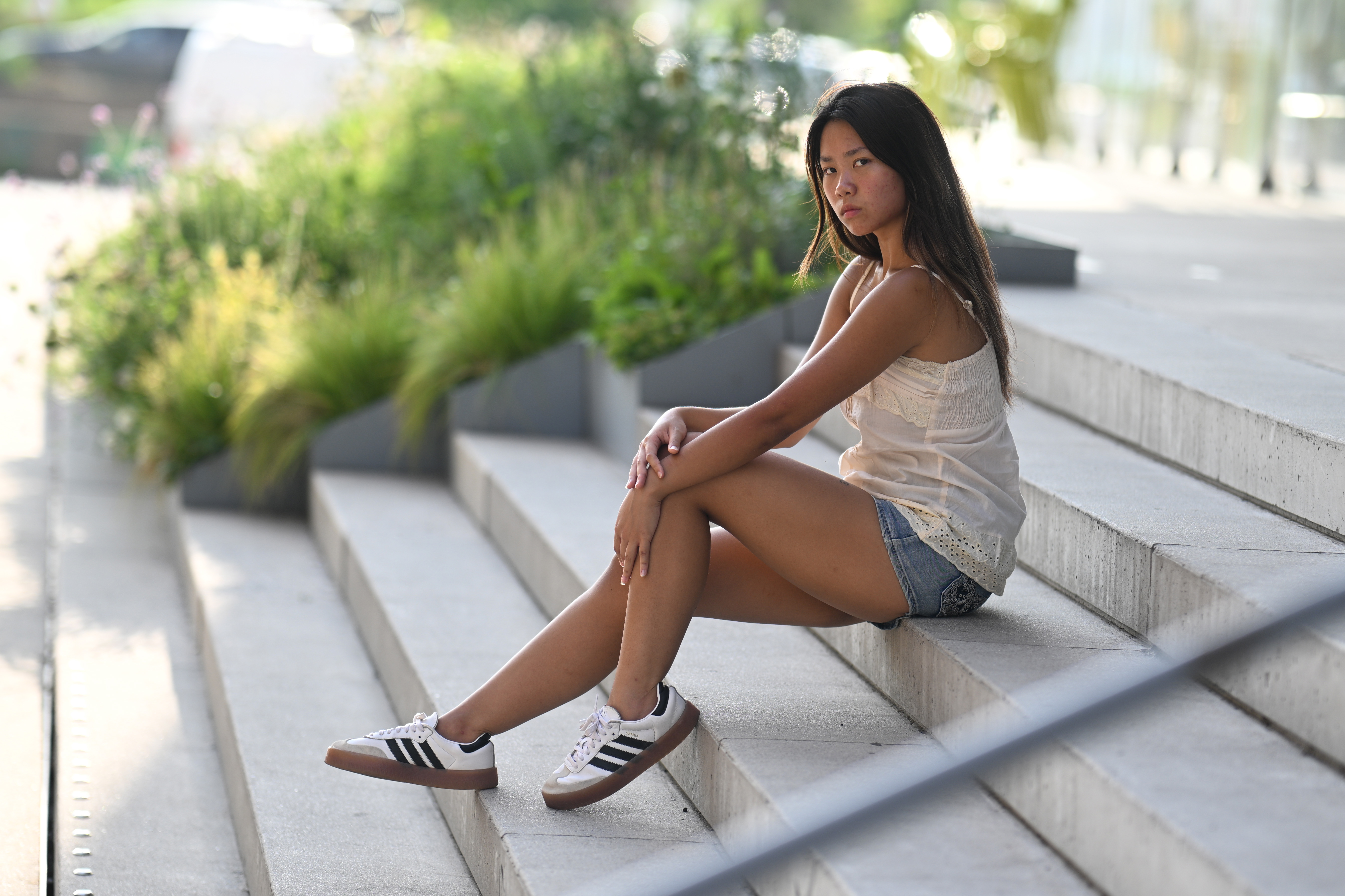
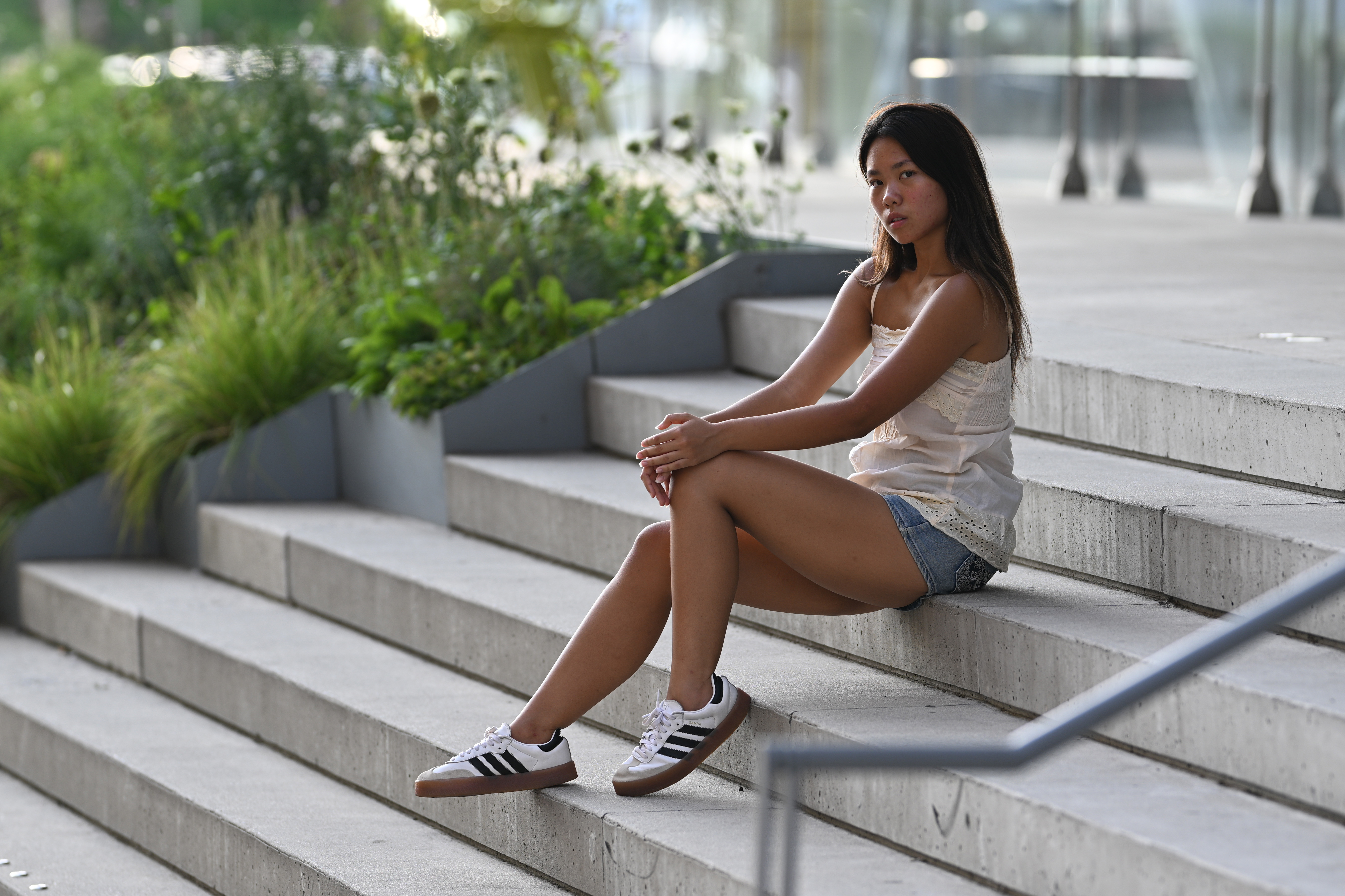
For a shooter willing to embrace third-party lens offerings, new companies like TT Artisans, 7 Artisans, and Thypoch offer wide aperture lenses at substantially lower costs than what was available in the past. Another option for achieving this look is to use a smartphone with computational photography technology, which uses software to simulate the look of a fast lens. This rendering doesn’t stand up to pixel-level scrutiny, but it works fine for posting on social media platforms. Despite the shallow depth of field look being available to so many non-professional shooters today, there are professionals like me who continue to embrace the look.
My main camera is a Leica M10 with a 35mm f/1.4 Summilux lens shot wide open. This combination produces images that I love, but it is not the best choice for much of my corporate photography work. My professional workhorse is the Nikon Z9, but the camera is usually paired with zoom lenses that open to f/2.8. I’ve been considering adding a fast prime to the Z9 for the few occasions when a zoom lens is not mandatory.
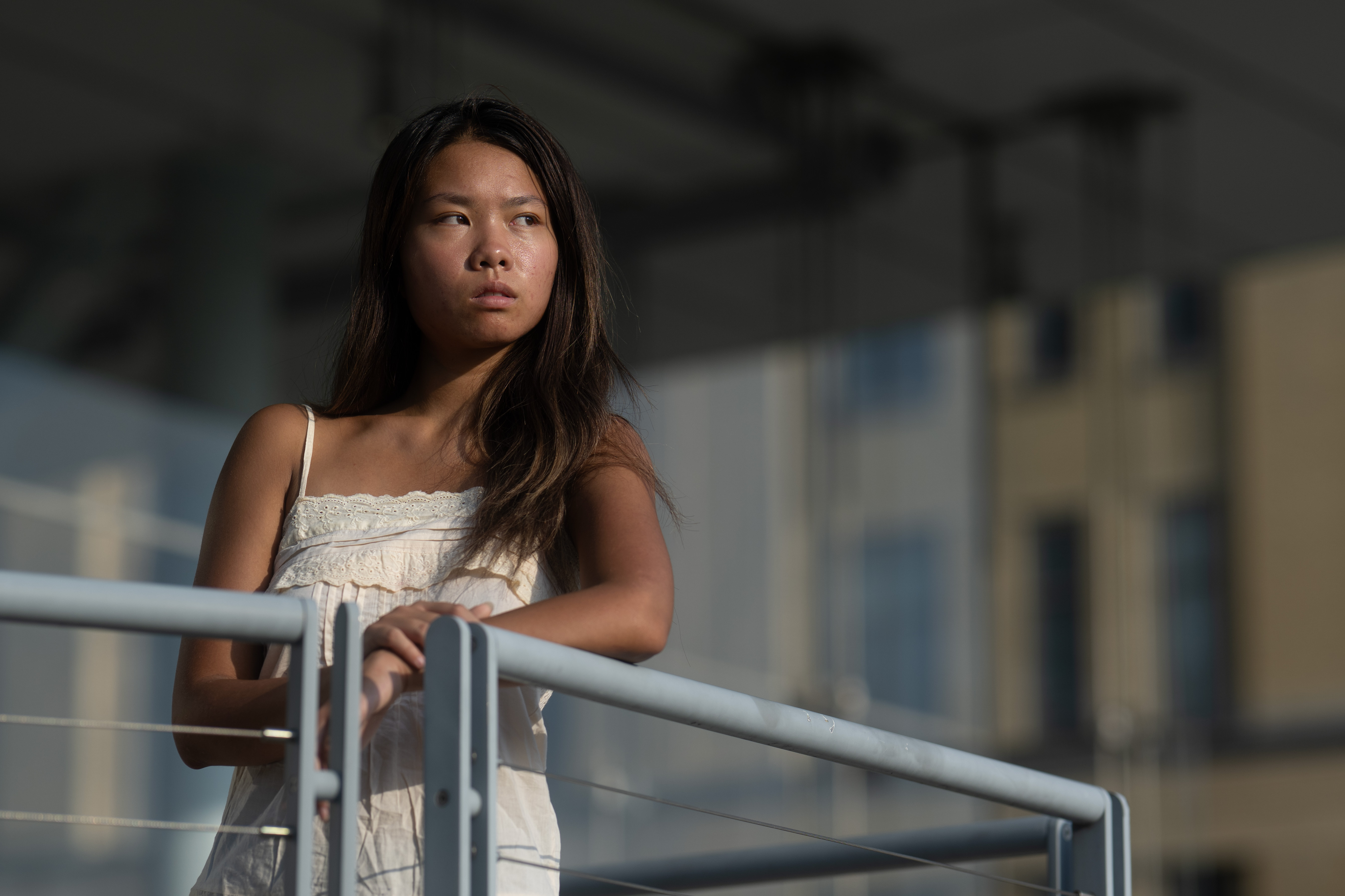
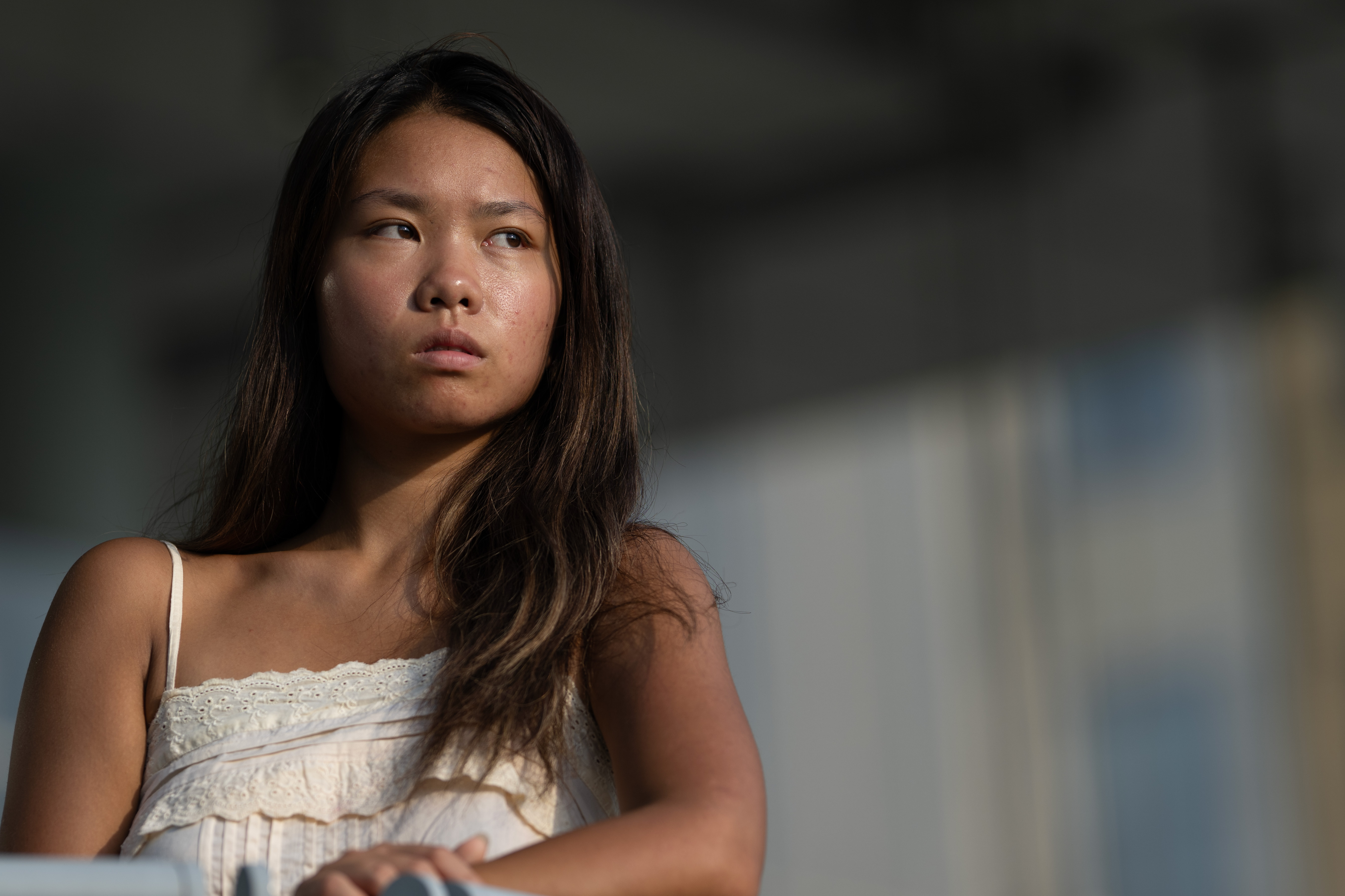
Nikon offers several fast lenses, including a Nikon Z 50mm f/1.2, but the lenses of most interest to me are the Nikon Z 85mm f/1.2 and the Nikon Z 135mm f/1.8 Plena. Of the two, my preference would be to shoot with an 85mm focal length so I can be closer to my subject. And while an 85mm f1.2 lens will undoubtedly produce a pleasing, soft background effect, the Nikon Plena lens is marketed with an emphasis on how beautiful it renders the out of focus elements in an image and I was curious to see if the performance gain would be worth the downside of having to be farther away from my subject than I would like to be. Both lenses are big, heavy, and share a similar design, but oddly, the 85mm is the larger of the two. Both balance equally well on the Z9.
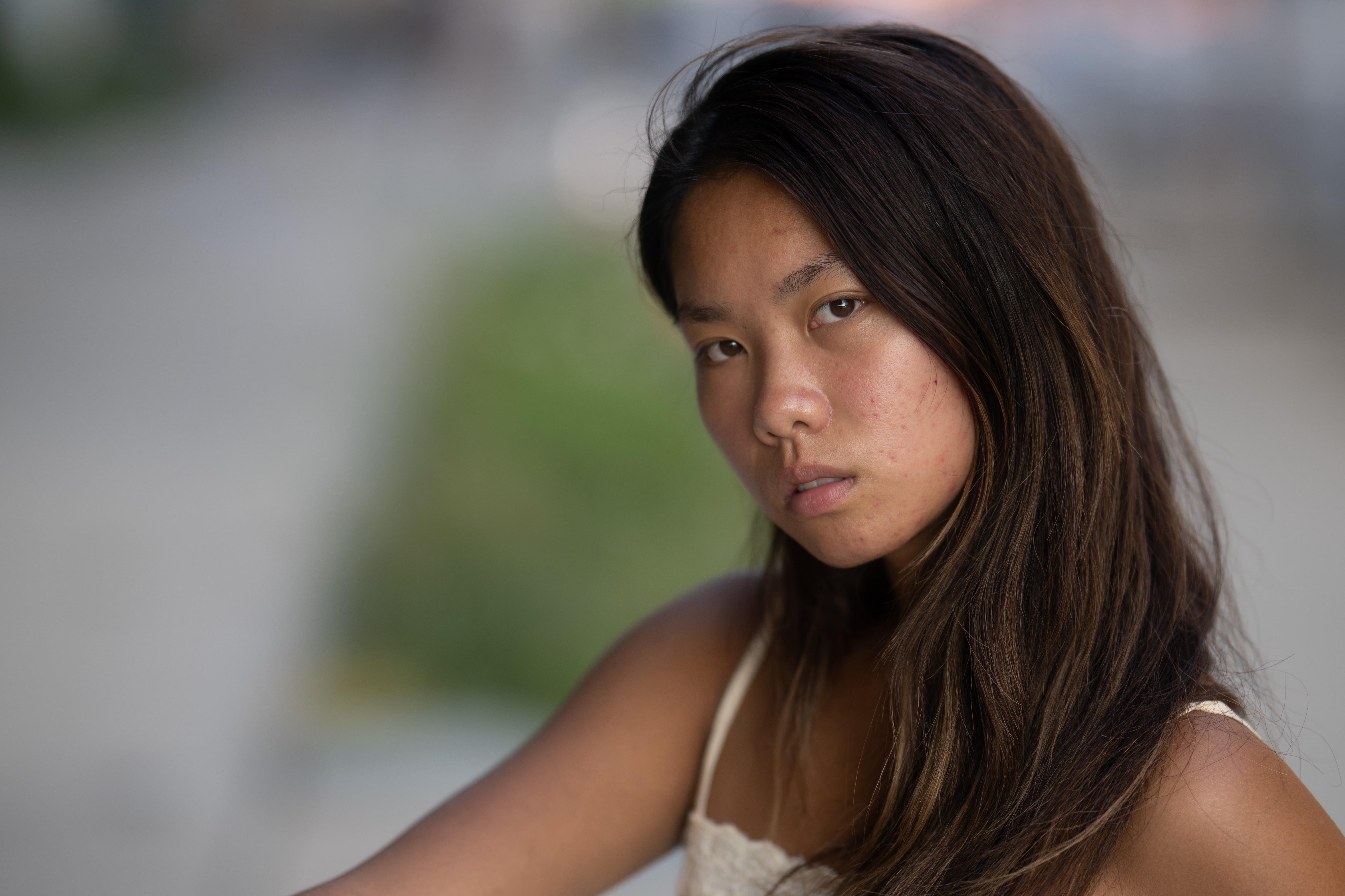
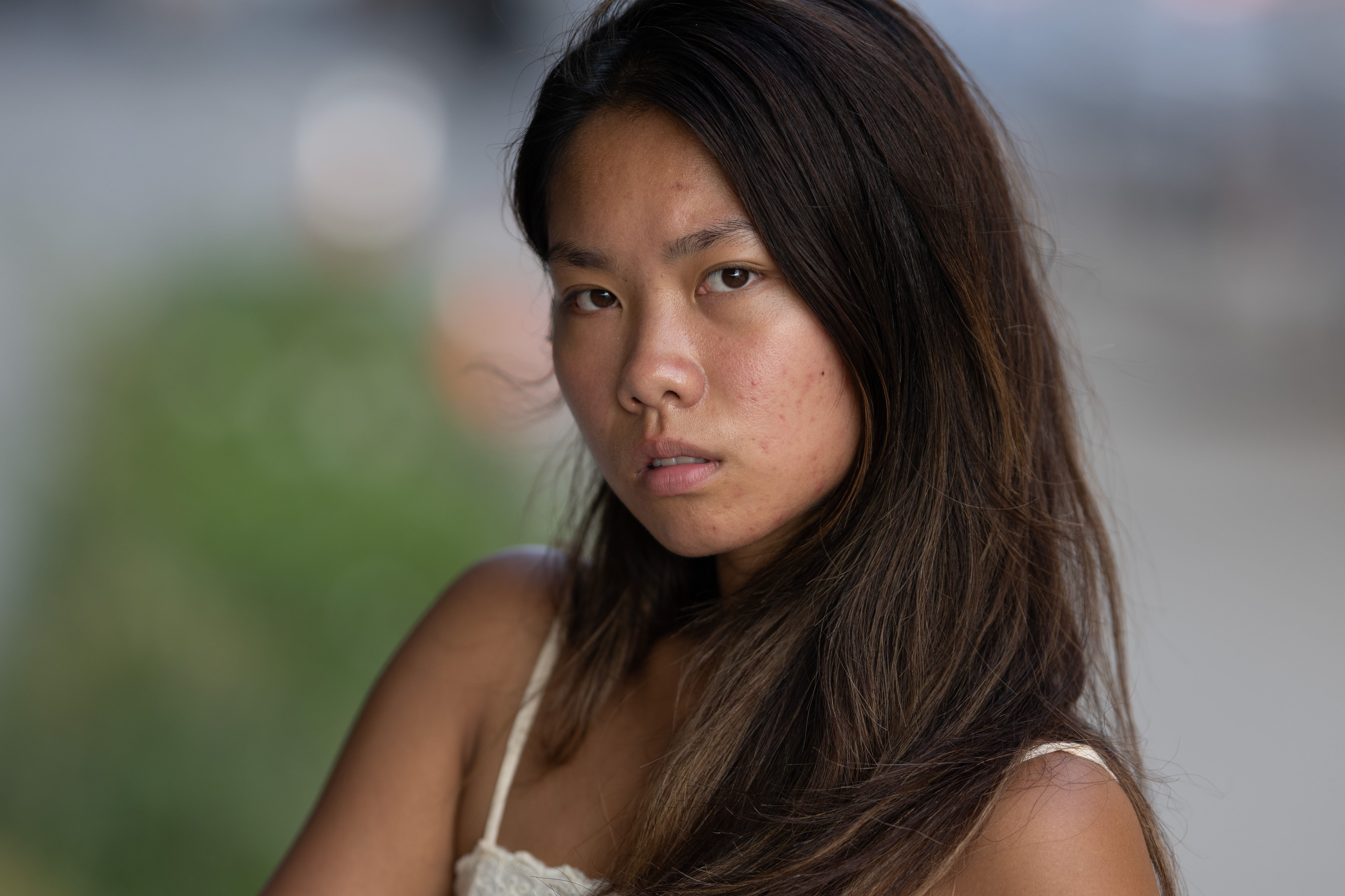
To compare these lenses, I shot a variety of wide-open images of a model named Rachel in NYC’s Meatpacking District. I photographed Rachel from a variety of shooting distances, positioning her both near and far from background elements. I often changed my shooting position so that the composition would be similar between the 2 lenses. The images are provided here straight out of camera (unless otherwise noted) so you can draw your own conclusion.
In my review of the images, it was clear to me that the background blur was pleasing from both lenses, with Rachel’s eyes appearing tack sharp and the background being blurred beyond recognition at times. This look is desirable when you want the viewer’s attention to be drawn to a single aspect of an image rather than the image as a whole. In a city like New York that tends to be crowded, using a shallow depth of field can help you isolate a subject on almost any street corner.
A photographer cannot rely on a fast lens to magically transform every random corner into a prime shooting location. At one point, I positioned Rachel near the most unattractive element I could find, which was a small forklift. I wanted to see if the background blur might render this vehicle unrecognizable. Unfortunately, this was not the case, and despite the forklift being blurred in the photograph, it was still recognizable as a forklift, making the image suitable only for the trash bin.
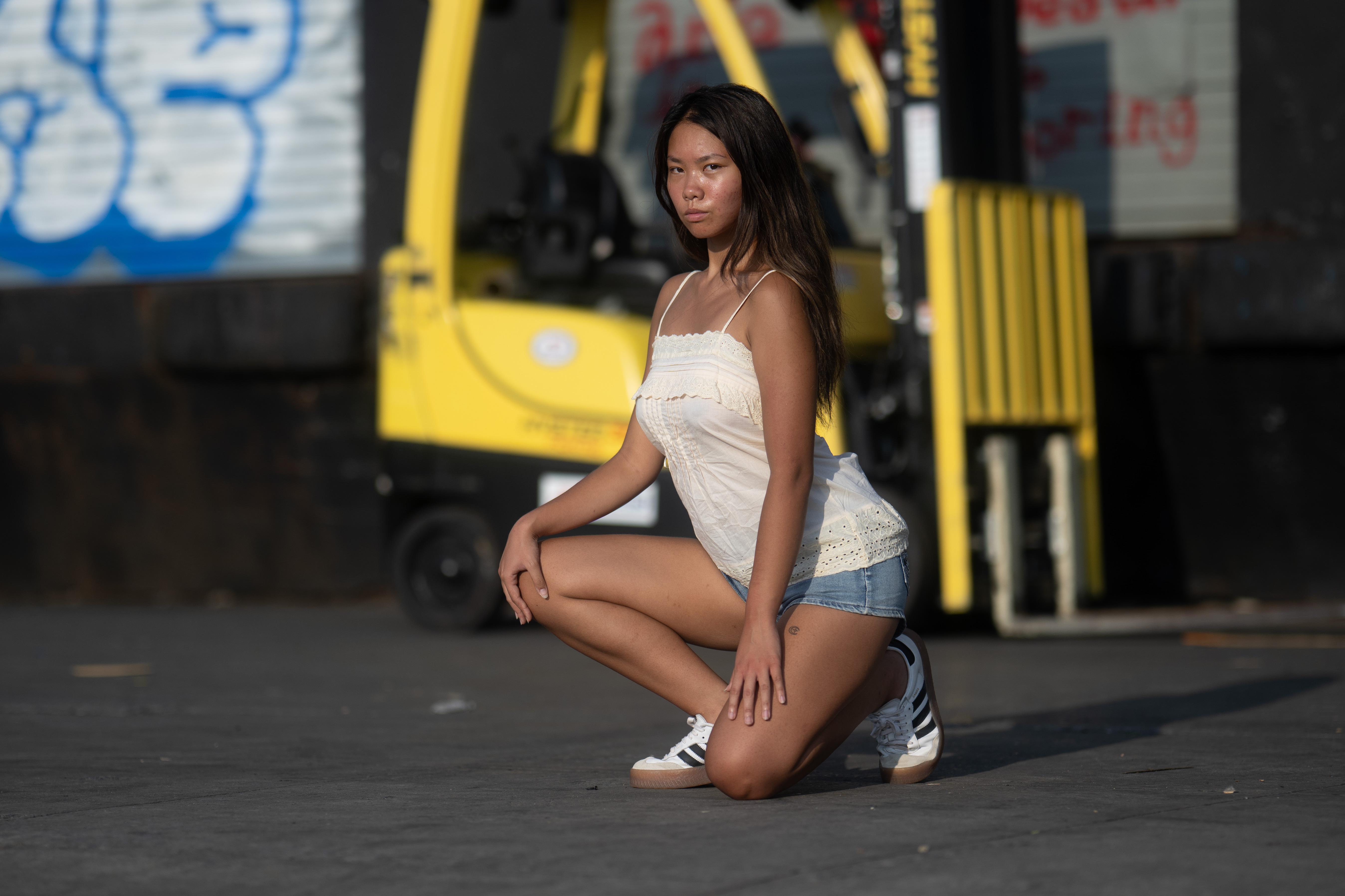
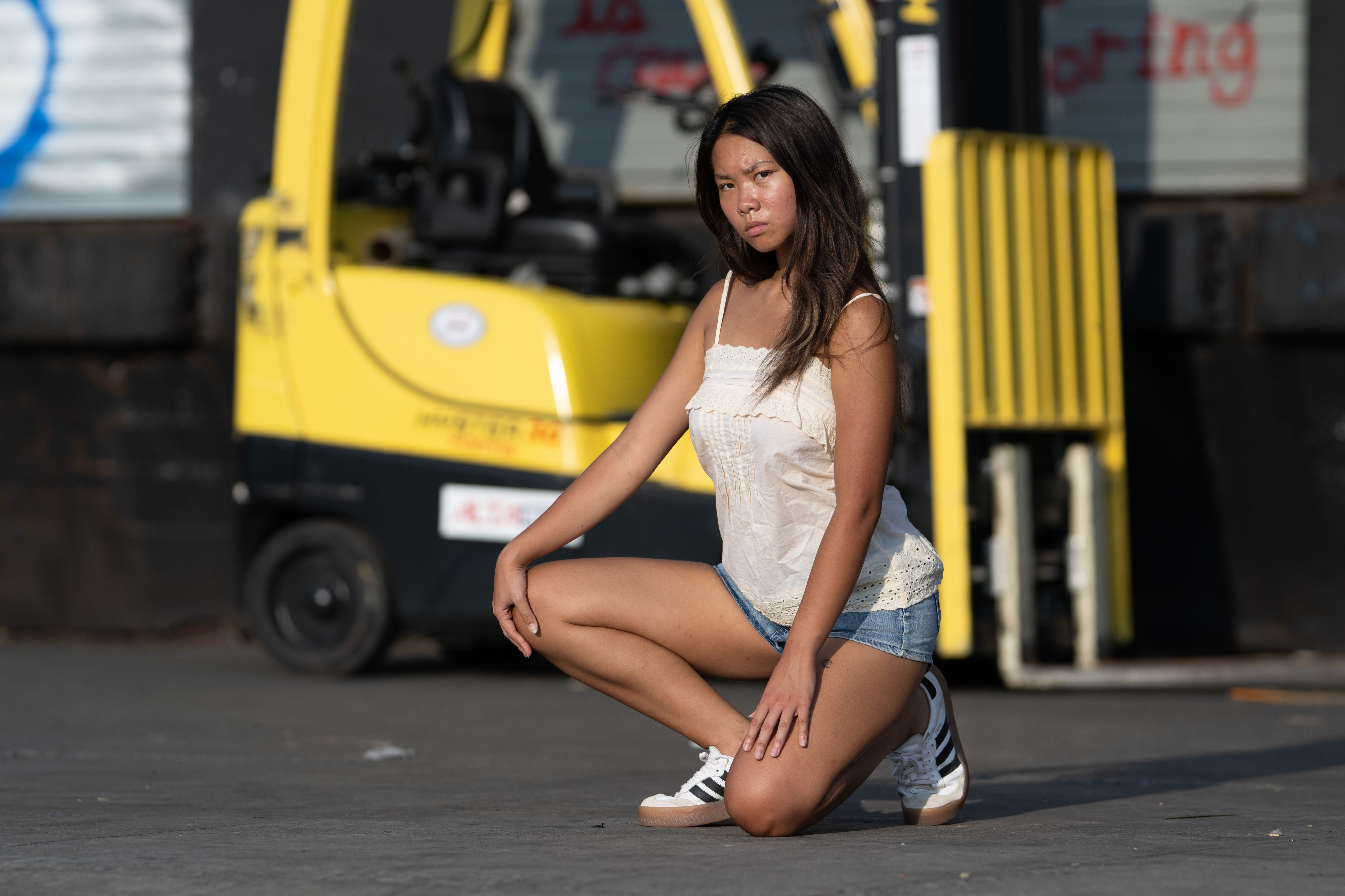
The blurring effect of any fast lens works best when the subject is far from the background and the photographer is close to the subject. As you position yourself farther from the model, the blurring effect is lessened, making the background more discernible. It is safe to say you should pay attention to the background elements no matter what lens or aperture settings you have selected.
Determining which of the two lenses produces a more attractive rendering is subjective. Both lenses produce great results, and modern autofocus technology all but ensures that you can create sharp images even when shooting wide open. As someone who loves shooting with a 35mm focal length, I didn’t like having to be far away from Rachel to compose with the 135mm Plena. The problem exists with the 85mm lens, but to a lesser degree. It is difficult to communicate with the model when she is far away.
Had we been shooting indoors in a typically small NYC office or apartment, I might not have had the space to move far enough away from her to compose as I desired. These problems would have a negative impact on the usability of the 135mm lens for my shooting style. If I were to make a purchasing decision based on which lens I preferred shooting with, it would be the 85mm lens.
However, in reviewing photographs after the shoot, the differences between the images taken from the 85mm and the 135mm were subtle, but the 135mm lens lived up to Nikon’s hype and had the more pleasing rendering of out of focus elements. Therefore, I would purchase the 135m Plena, despite it being a specialty item for me, which would be useful in only a few situations.
It is great for tight portraits where the subject’s head is cropped and excellent for capturing shots of eye makeup or fingernail designs when shooting fashion. And while the lens can be utilized for 3/4 or even full length portraits, I don’t think a 135mm focal length is the best choice for these shots because of the aforementioned issues that come with being some distance away from the person you are photographing. The lens would be good for concert photography in situations where your shooting distance just happens to be right for a 135mm lens, but you don’t always have control over where you will be taking photos.
Many people choose cameras and lenses that are versatile. When paired with a 24-70mm zoom lens, my Nikon Z9 is well suited for in shooting any genre of photography you can name. Still, there can be artistic benefits in using photography tools that are more limited in their functionality. The small, retro-styled Nikon ZF isn’t as versatile as the Z9, but it would be my first choice if I were using a Nikon for street photography. If I were photographing fashion, I’d rather have a fast 85mm lens than a slower 70-200mm zoom. Today, any smartphone is capable of taking a great photograph, and there isn’t much need for a specialized lens for general image capture.
But if you want your images to have a look that is unlike most other photographers, you might need to consider a tool like the Nikon Z 135mm Plena that excels in only a few specific areas of photography.
Related reading:
- Complete guide to Portrait photography and portrait types
- Best cameras for portrait photography
- 13 quick portrait photography tips

